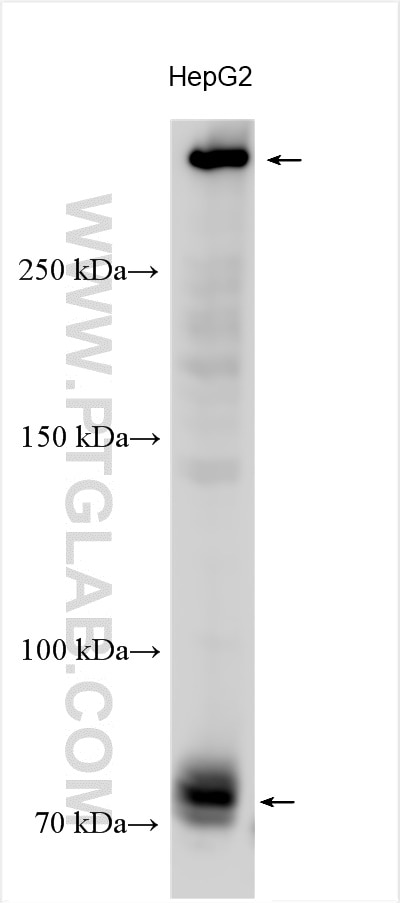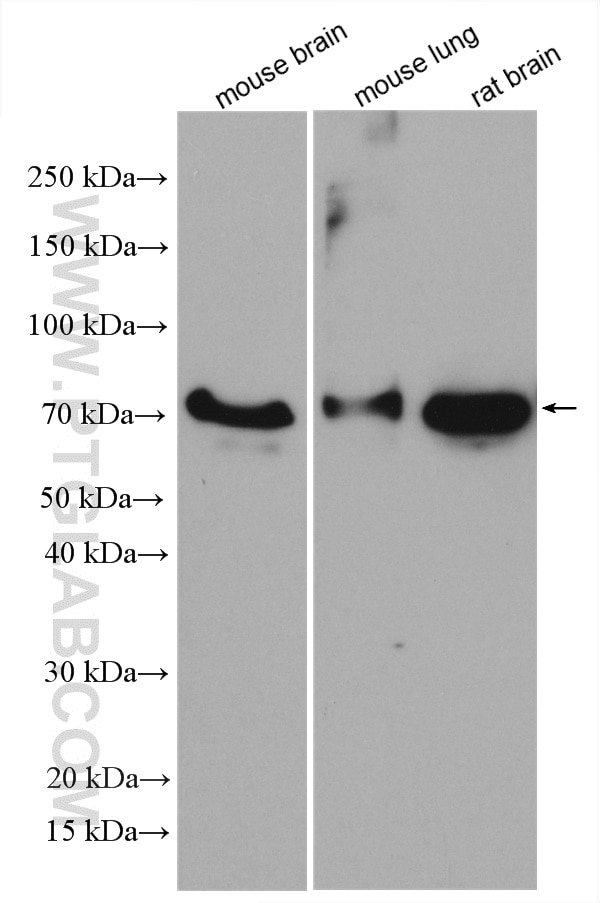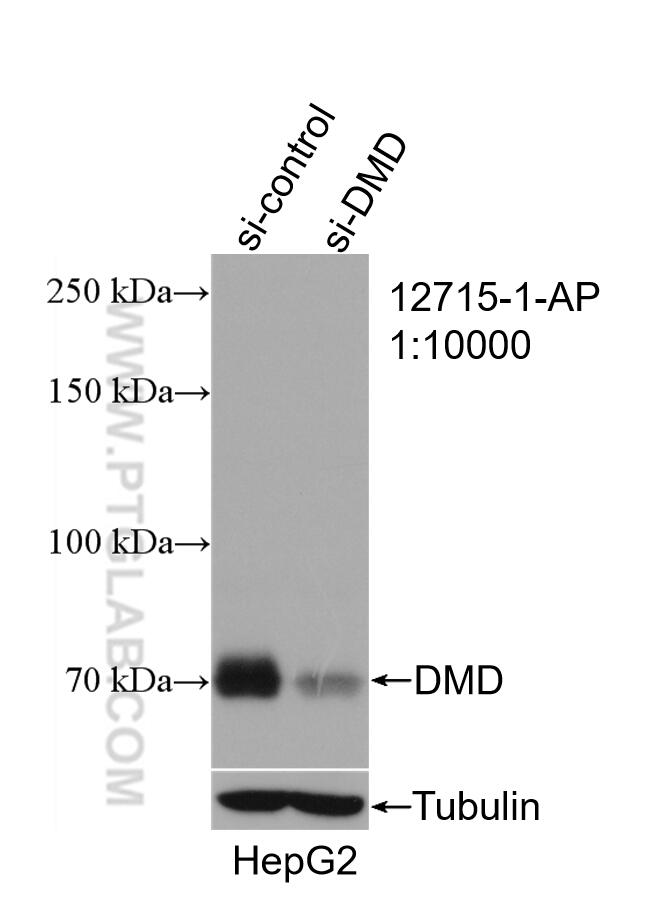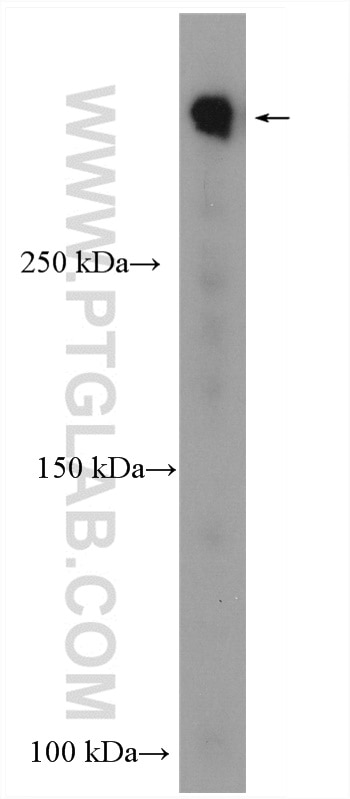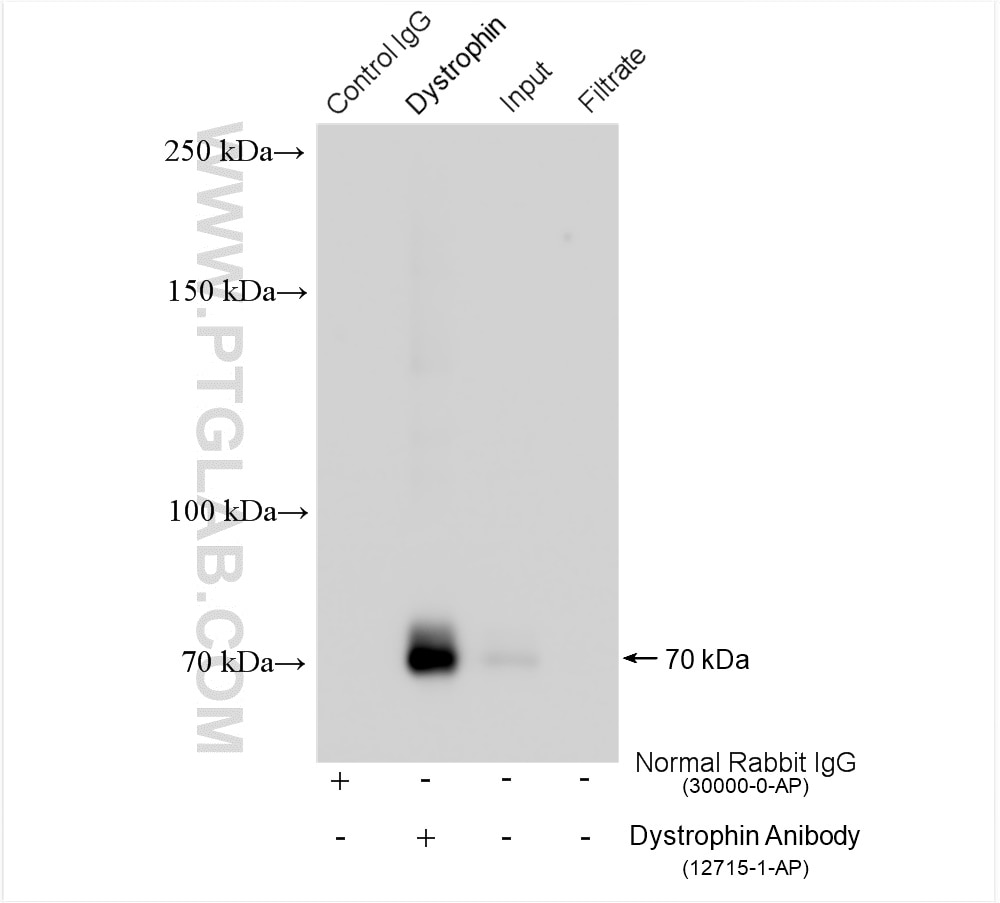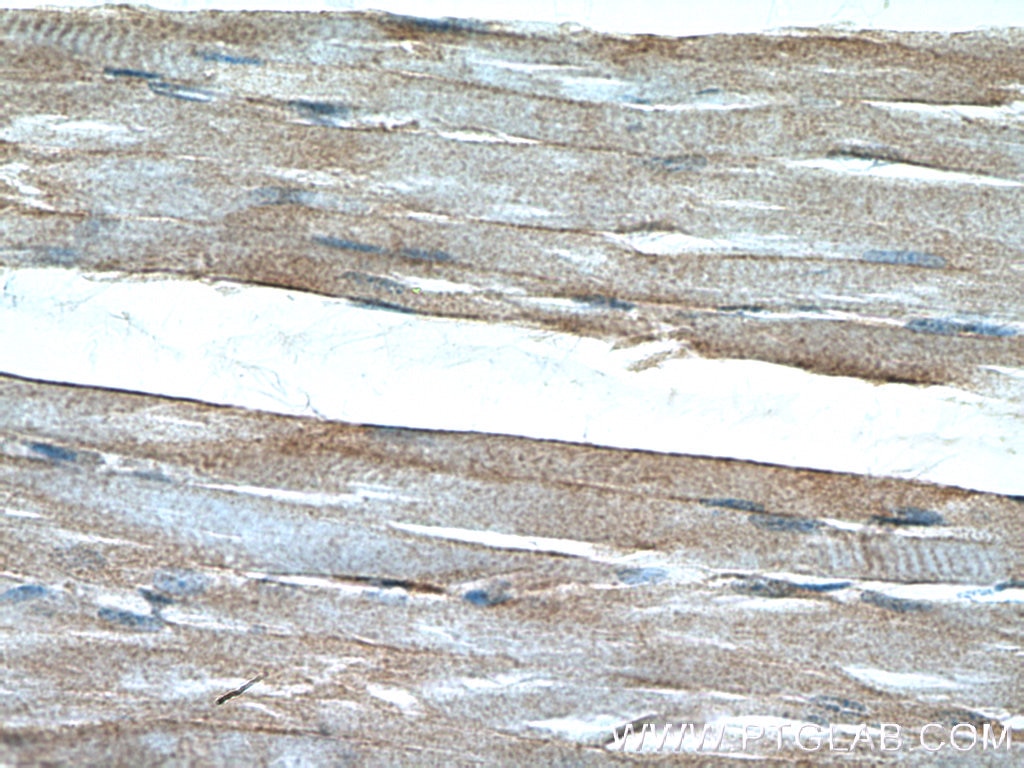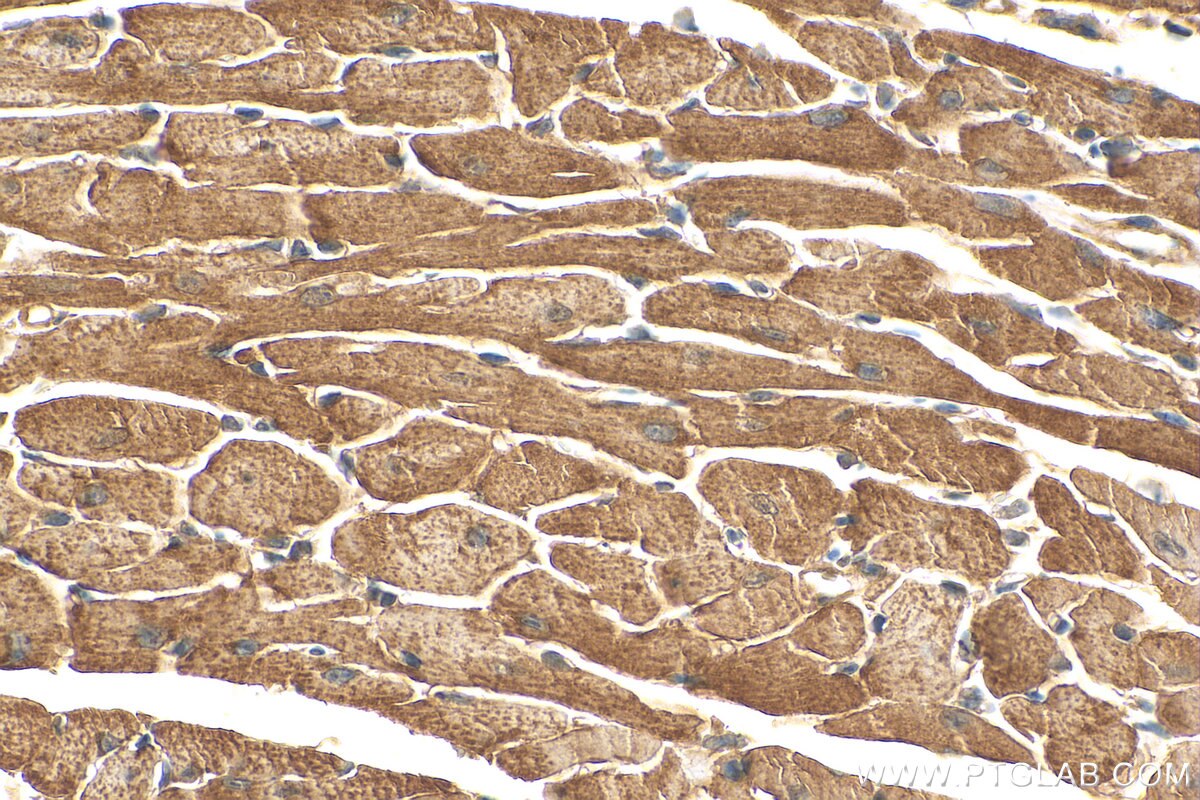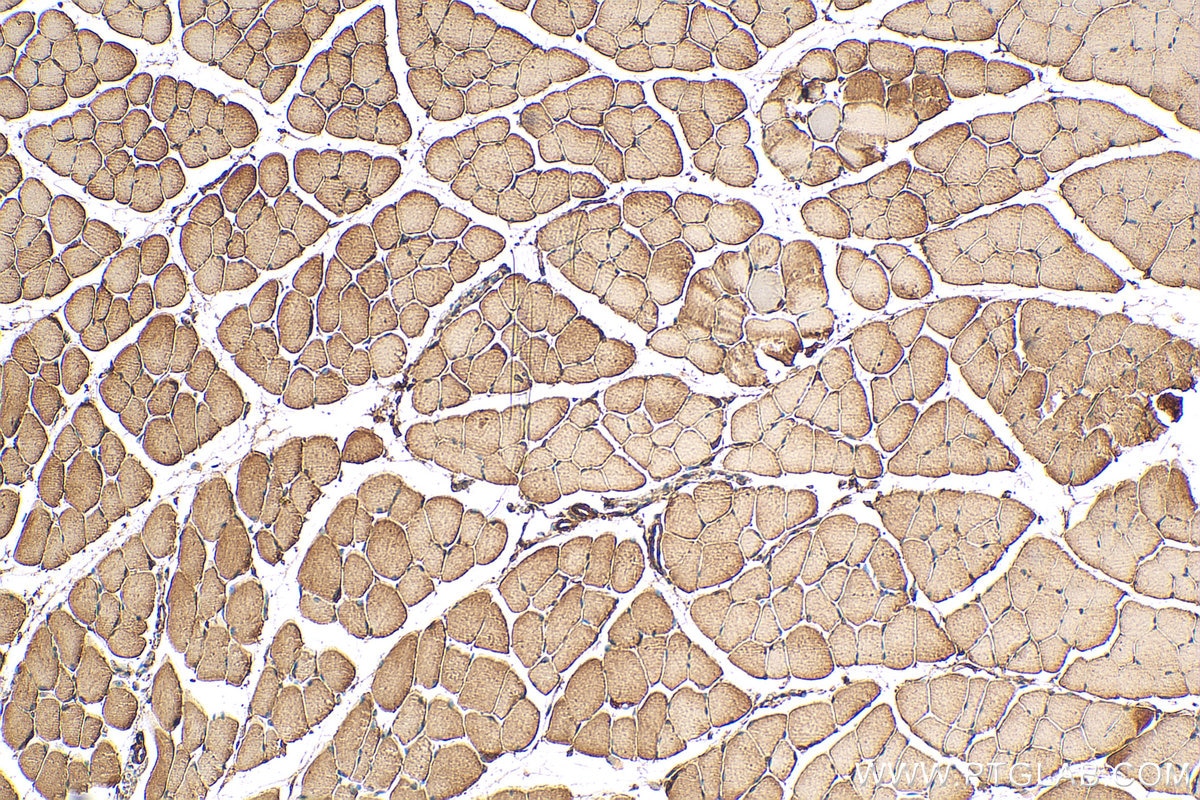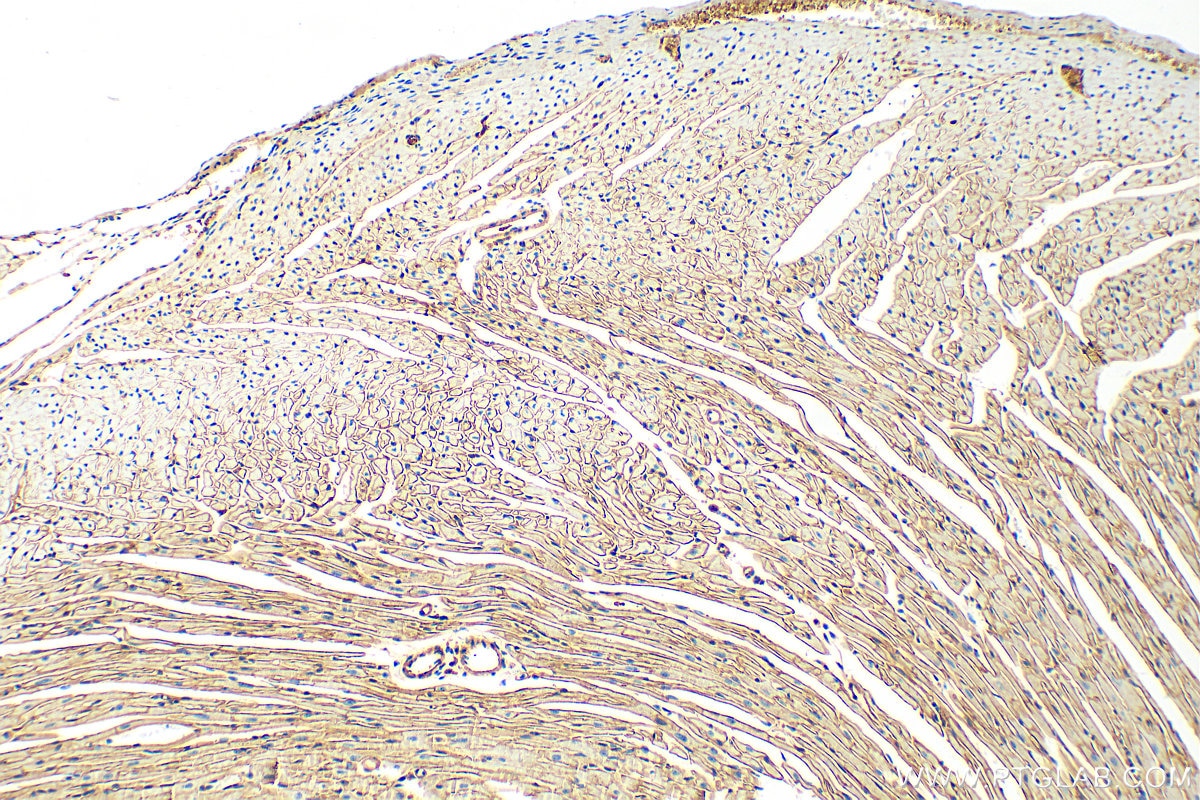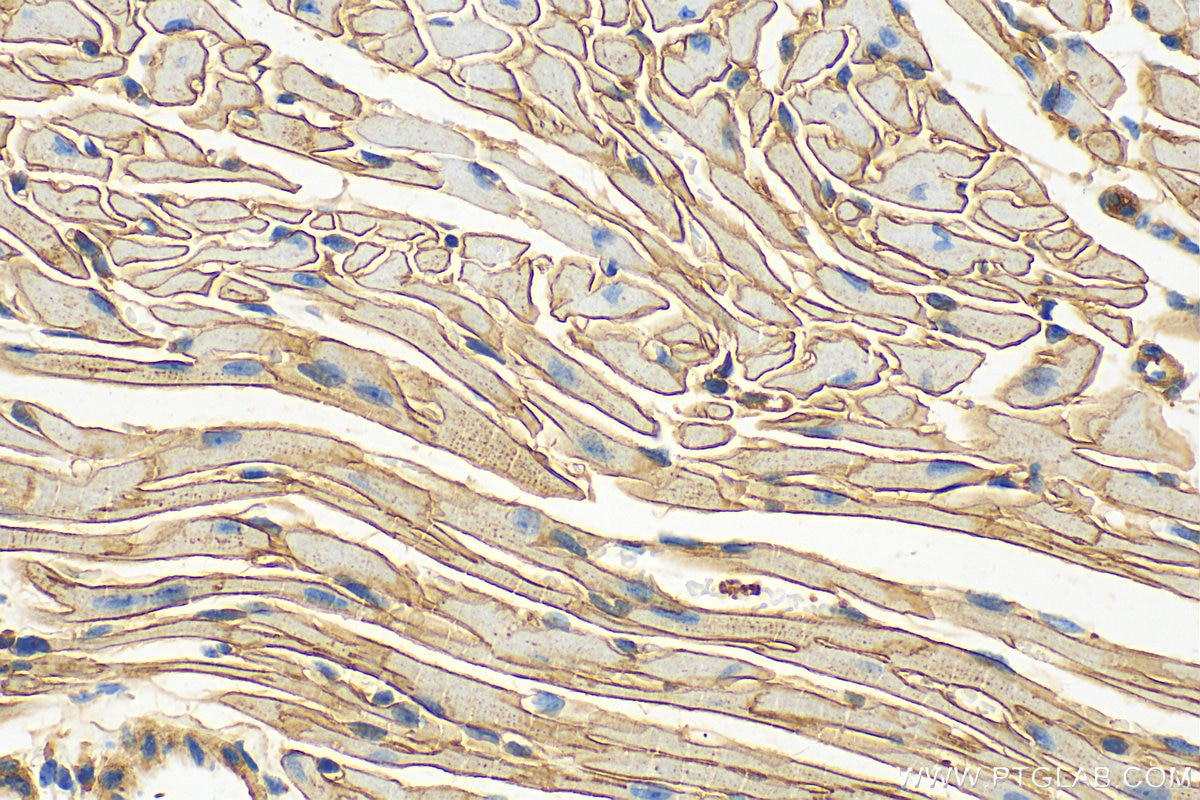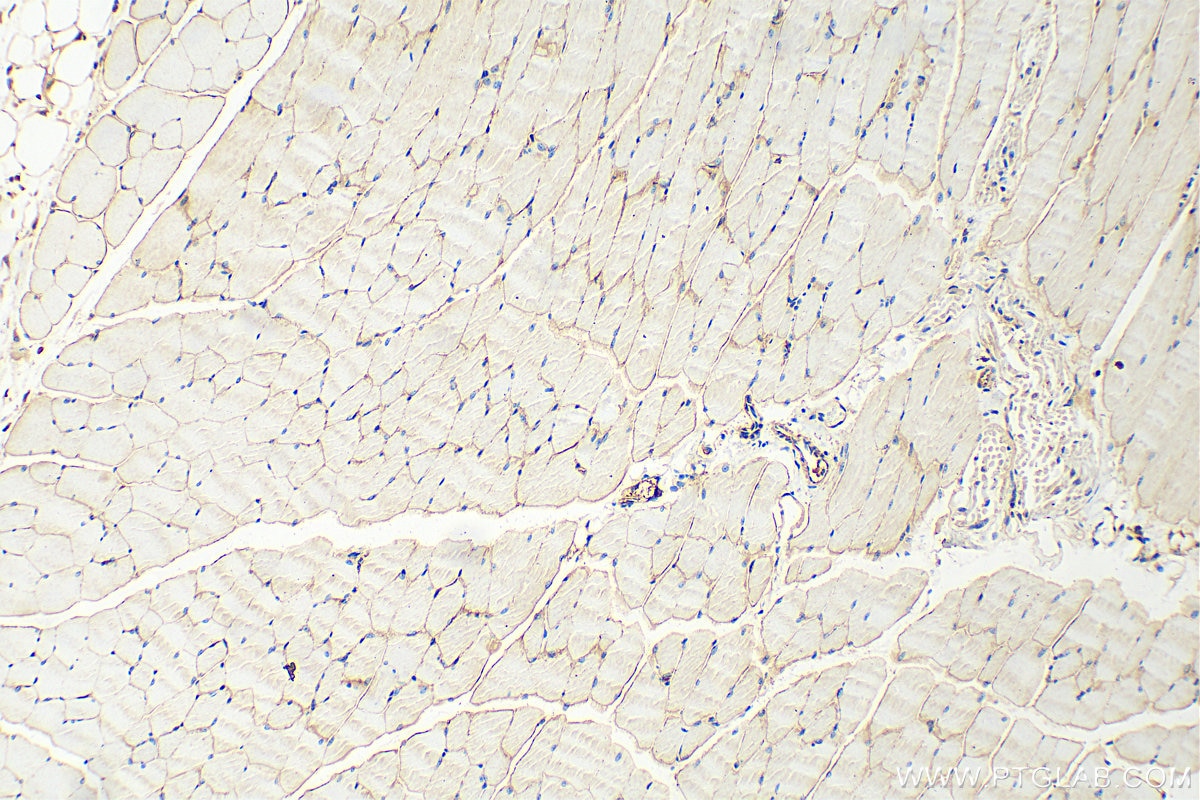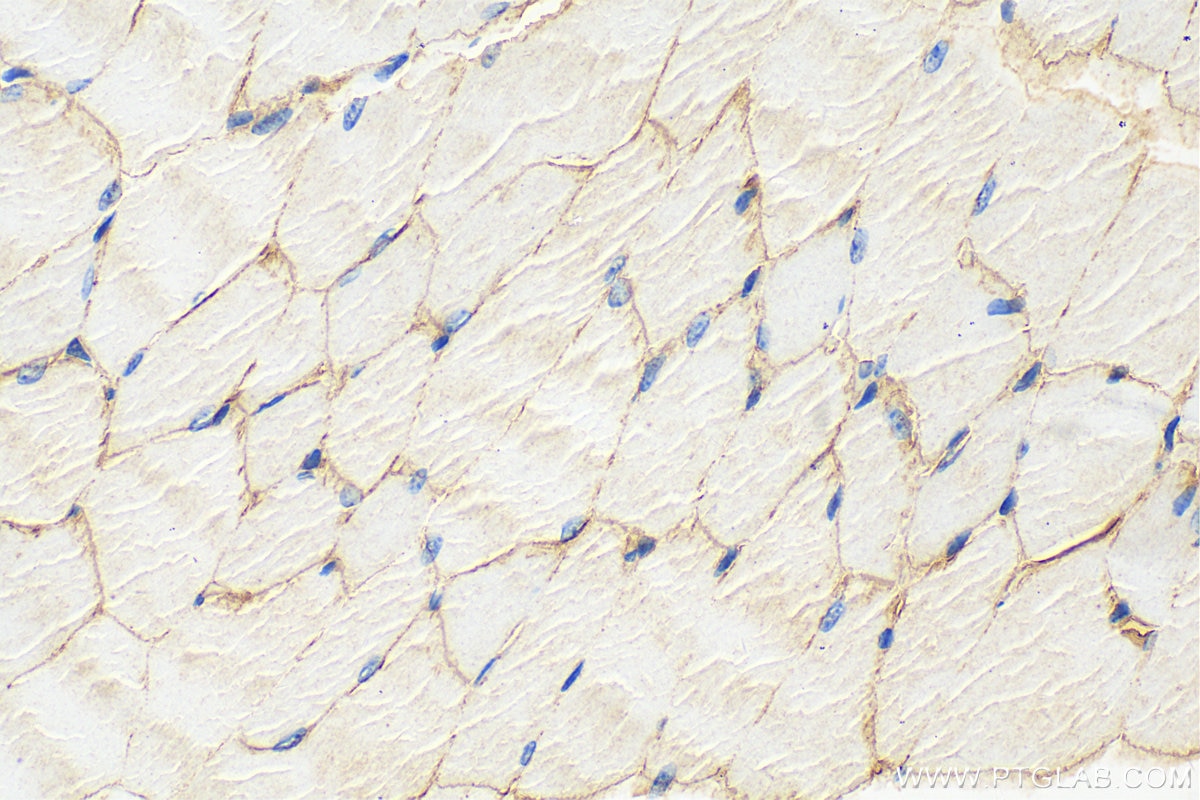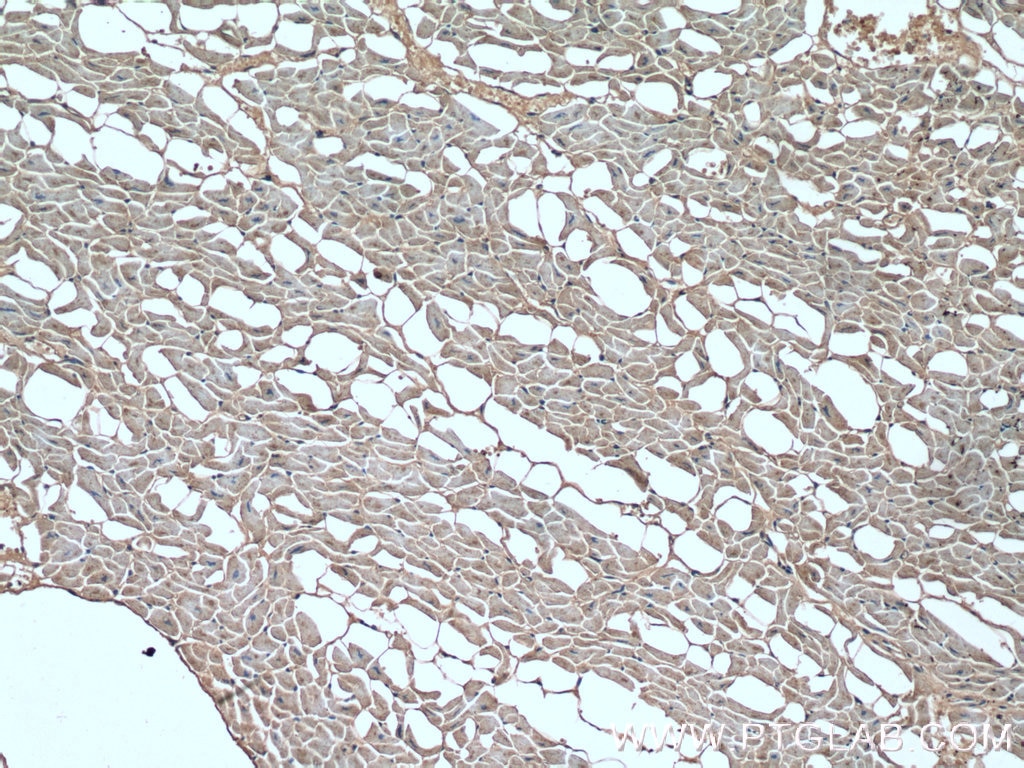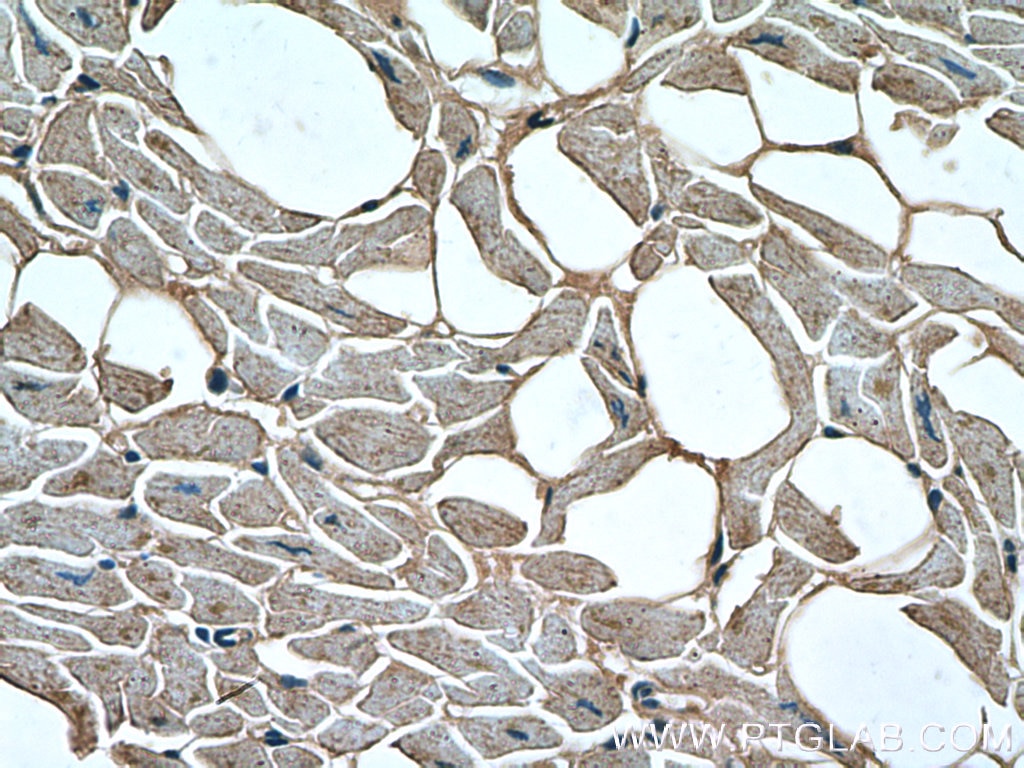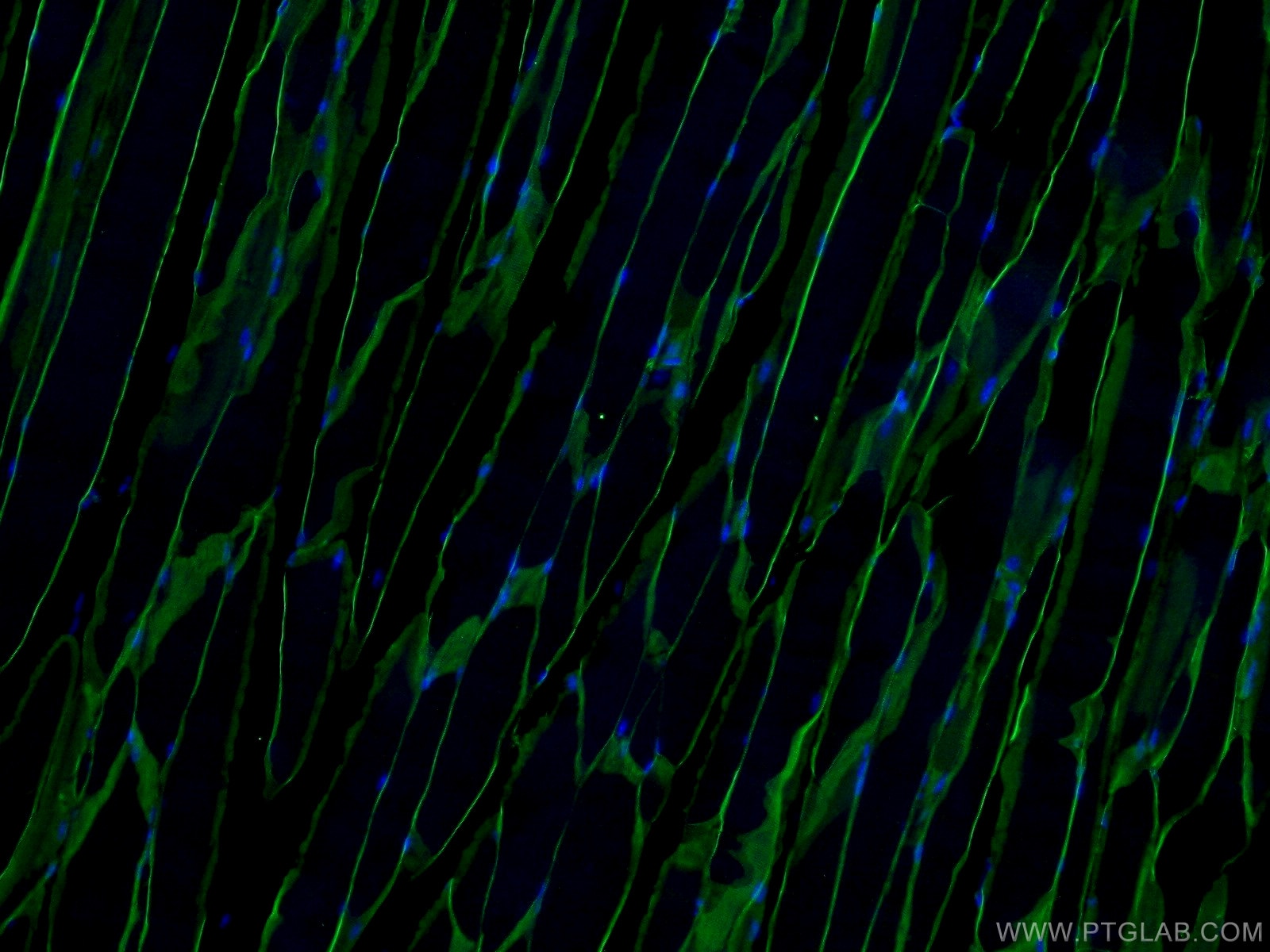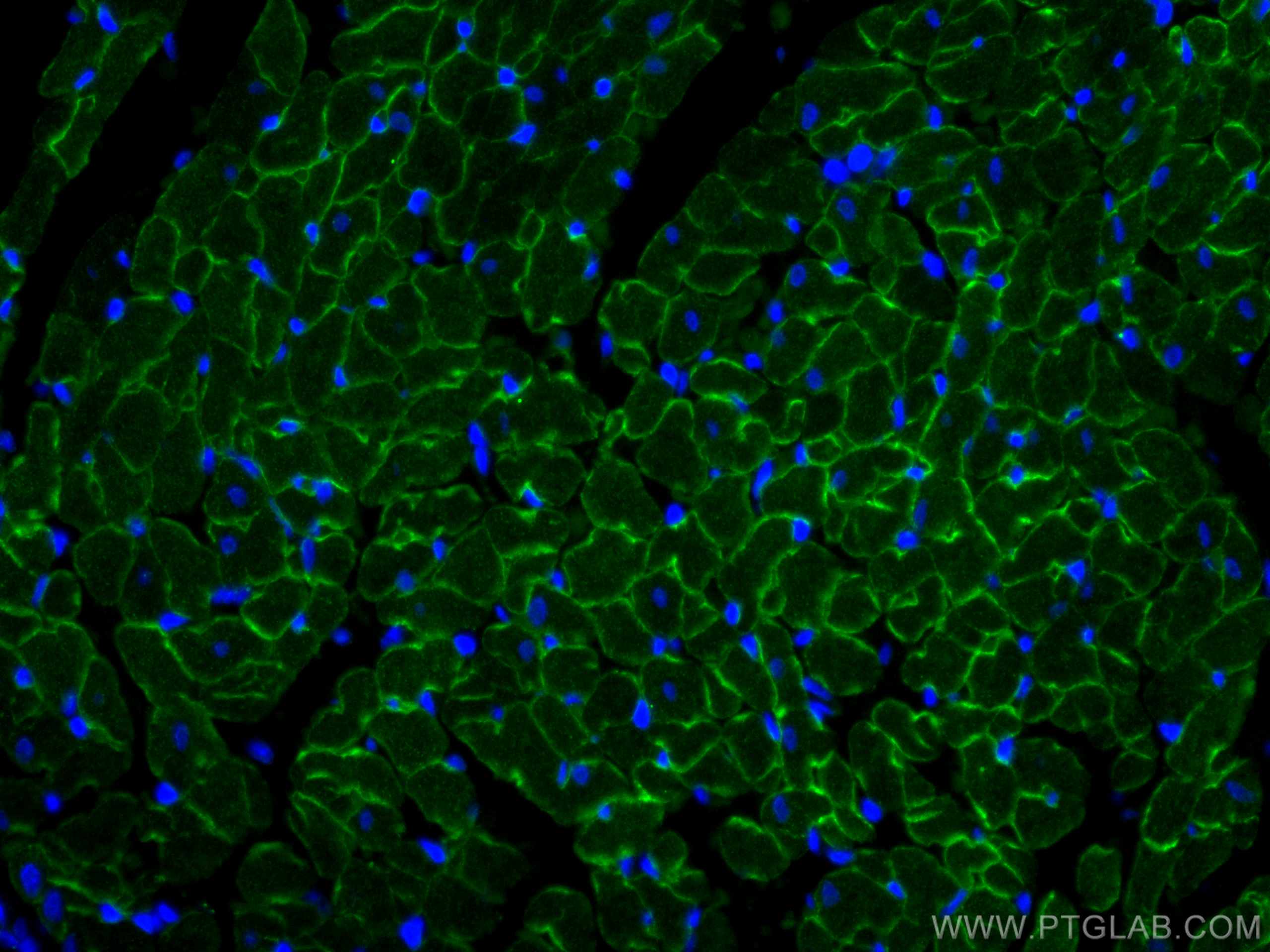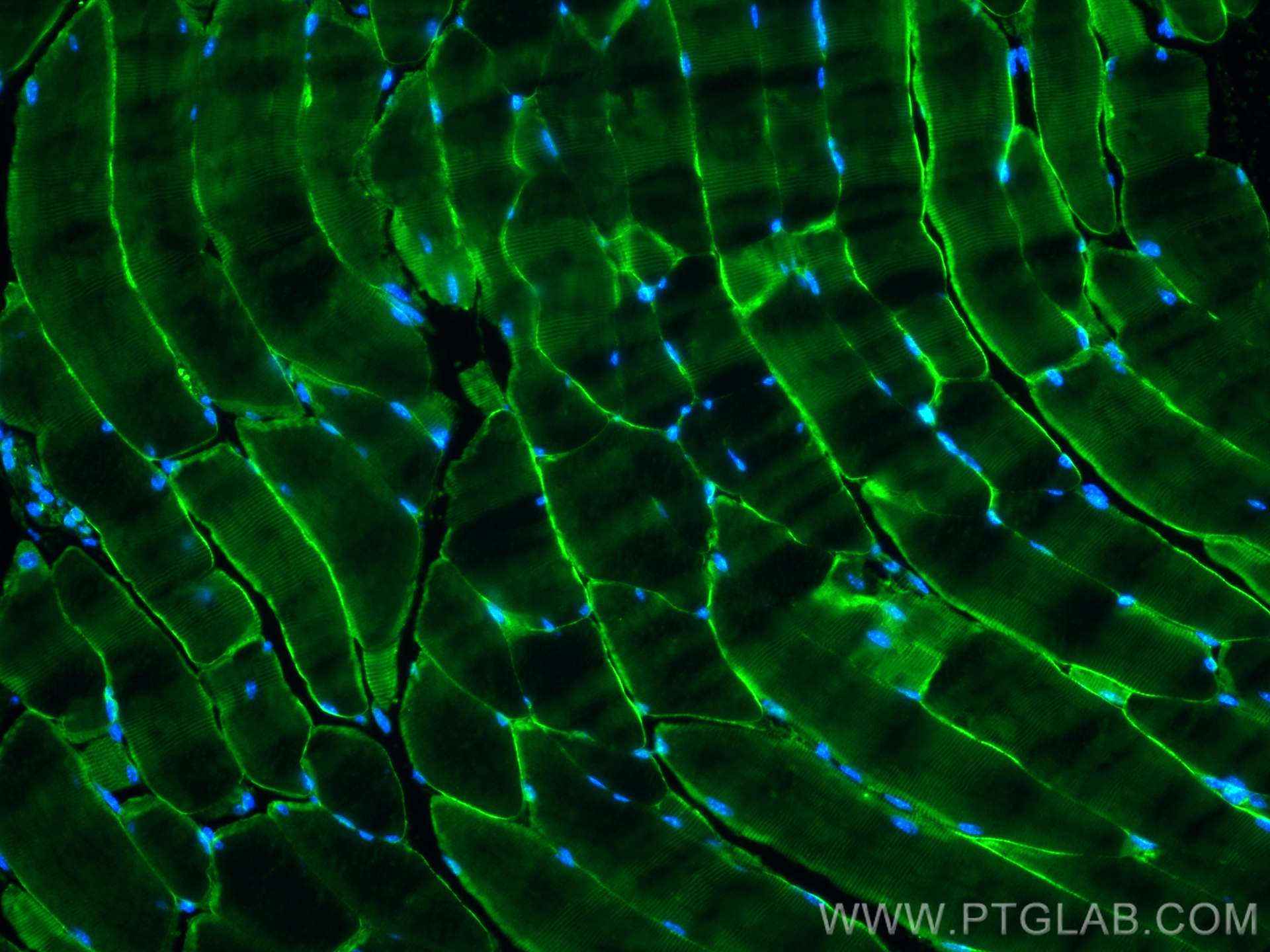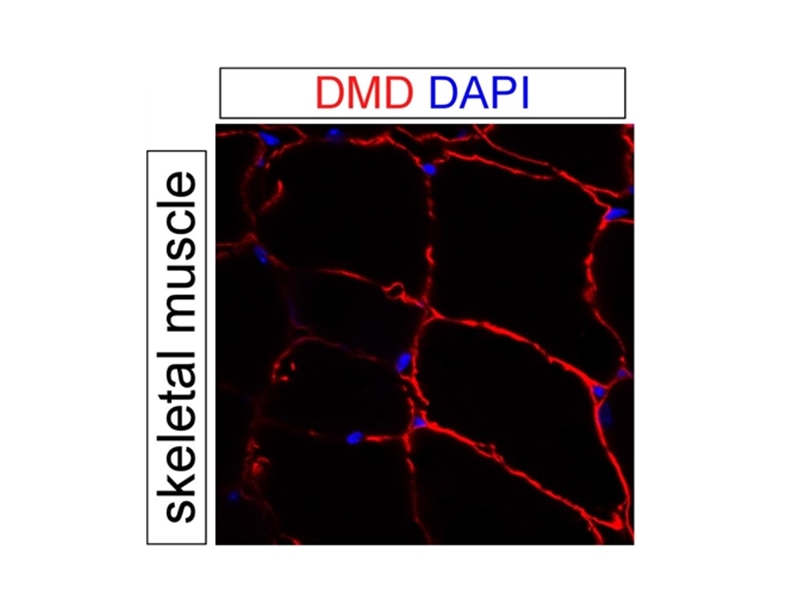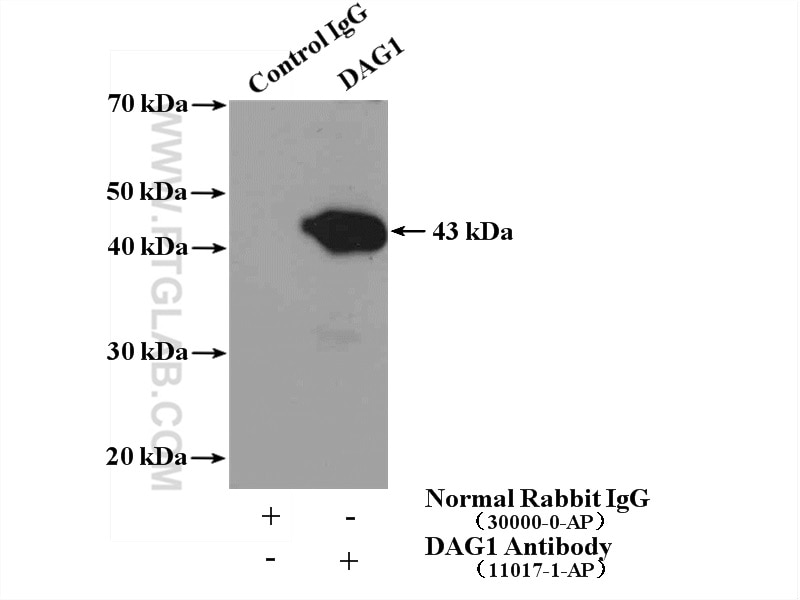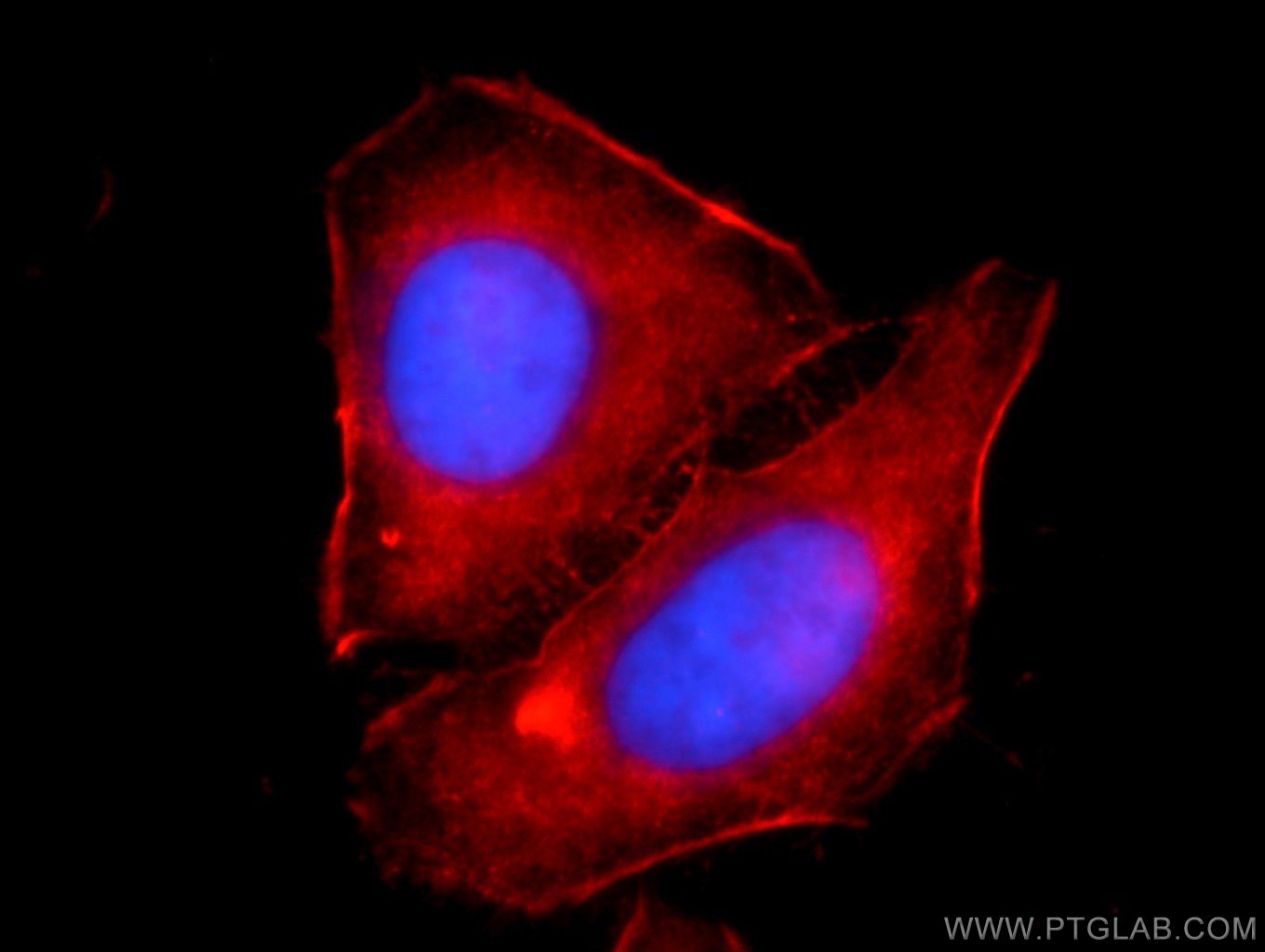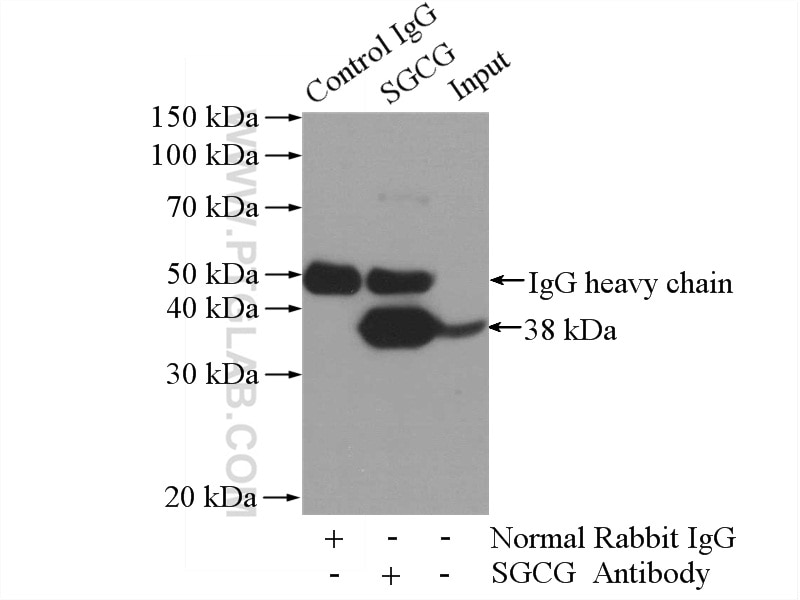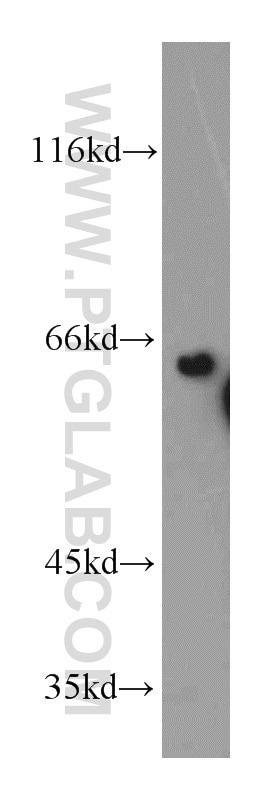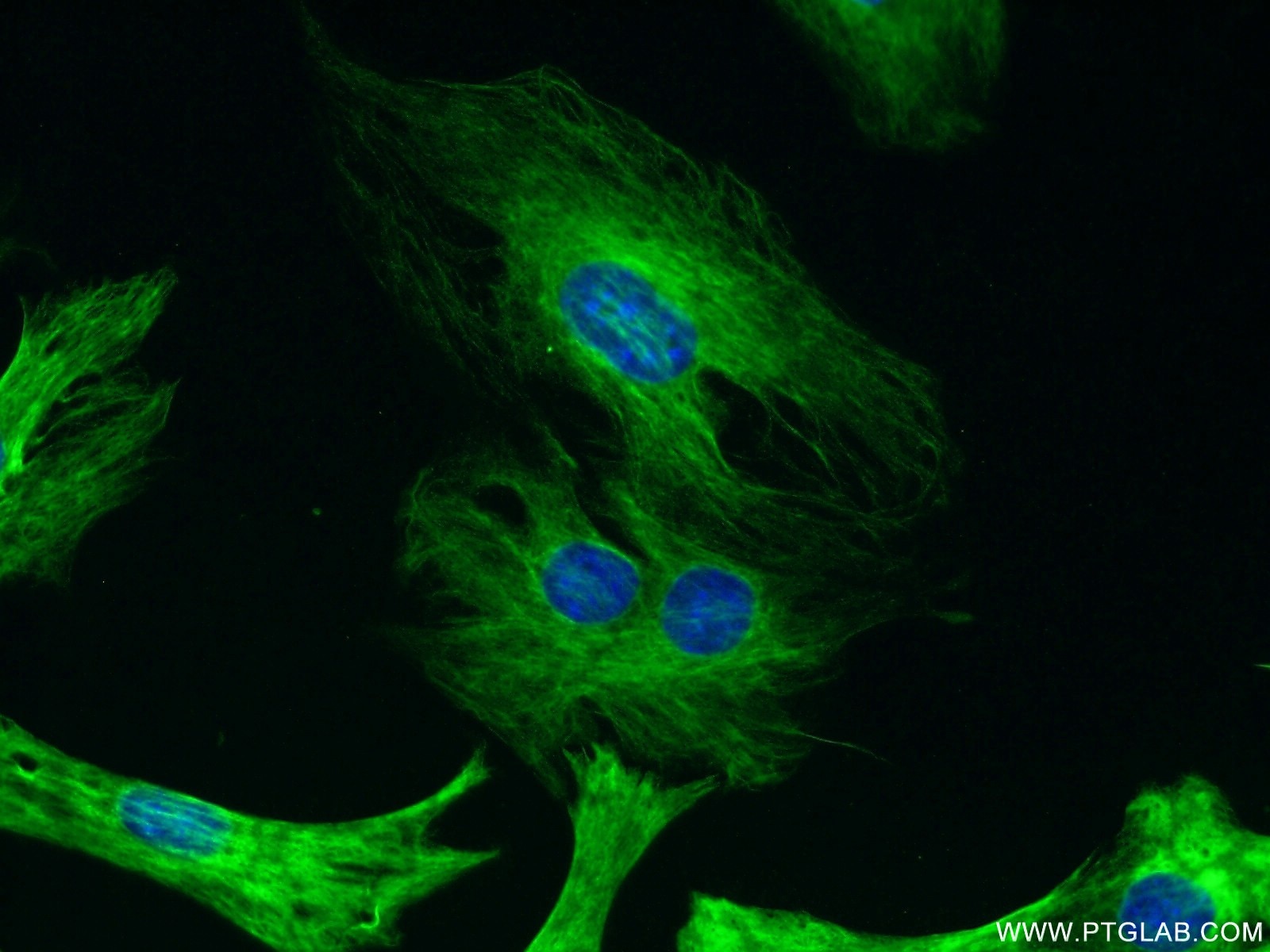- Phare
- Validé par KD/KO
Anticorps Polyclonal de lapin anti-Dystrophin
Dystrophin Polyclonal Antibody for WB, IP, IF, IHC, ELISA
Hôte / Isotype
Lapin / IgG
Réactivité testée
Humain, rat, souris
Applications
WB, IP, IF, IHC, ELISA
Conjugaison
Non conjugué
N° de cat : 12715-1-AP
Synonymes
Galerie de données de validation
Applications testées
| Résultats positifs en WB | cellules HepG2, cerveau de rat, poumon de souris, tissu cérébral de souris |
| Résultats positifs en IP | tissu cérébral de souris, |
| Résultats positifs en IHC | tissu de muscle squelettique de souris, tissu cardiaque de souris, tissu cardiaque humain, tissu de muscle squelettique humain il est suggéré de démasquer l'antigène avec un tampon de TE buffer pH 9.0; (*) À défaut, 'le démasquage de l'antigène peut être 'effectué avec un tampon citrate pH 6,0. |
| Résultats positifs en IF | tissu de muscle squelettique de souris, tissu cardiaque de rat |
Dilution recommandée
| Application | Dilution |
|---|---|
| Western Blot (WB) | WB : 1:5000-1:50000 |
| Immunoprécipitation (IP) | IP : 0.5-4.0 ug for 1.0-3.0 mg of total protein lysate |
| Immunohistochimie (IHC) | IHC : 1:1000-1:4000 |
| Immunofluorescence (IF) | IF : 1:20-1:200 |
| It is recommended that this reagent should be titrated in each testing system to obtain optimal results. | |
| Sample-dependent, check data in validation data gallery | |
Applications publiées
| KD/KO | See 1 publications below |
| WB | See 9 publications below |
| IHC | See 5 publications below |
| IF | See 12 publications below |
| IP | See 2 publications below |
Informations sur le produit
12715-1-AP cible Dystrophin dans les applications de WB, IP, IF, IHC, ELISA et montre une réactivité avec des échantillons Humain, rat, souris
| Réactivité | Humain, rat, souris |
| Réactivité citée | rat, Humain, souris |
| Hôte / Isotype | Lapin / IgG |
| Clonalité | Polyclonal |
| Type | Anticorps |
| Immunogène | Dystrophin Protéine recombinante Ag3408 |
| Nom complet | dystrophin |
| Masse moléculaire calculée | 3685 aa, 427 kDa |
| Poids moléculaire observé | 70 kDa, 430 kDa |
| Numéro d’acquisition GenBank | BC028720 |
| Symbole du gène | Dystrophin |
| Identification du gène (NCBI) | 1756 |
| Conjugaison | Non conjugué |
| Forme | Liquide |
| Méthode de purification | Purification par affinité contre l'antigène |
| Tampon de stockage | PBS avec azoture de sodium à 0,02 % et glycérol à 50 % pH 7,3 |
| Conditions de stockage | Stocker à -20°C. Stable pendant un an après l'expédition. L'aliquotage n'est pas nécessaire pour le stockage à -20oC Les 20ul contiennent 0,1% de BSA. |
Informations générales
Dystrophin (DMD or BMD) is a large muscle protein whose mutations cause Duchenne muscular dystrophy (DMD) and Becker muscular dystrophy (BMD), the childhood neuromuscular disorders that result in progressive muscle weakness, respiratory difficulties and cardiovascular dysfunction. Dystrophin is a crucial component of the dystrophin-glycoprotein complex which is essential for muscle membrane integrity and stability. Dystrophin is located on the cytoplasmic face of the sarcolemma and connects the cytoskeletal network to the sarcolemma and extracellular matrix. Multiple isoforms of dystrophin exist due to the alternative splicing, with a wide range of MW (69-72, 110-143, 271, 426 kDa). Most tissues contain transcripts of several isoforms.
Protocole
| Product Specific Protocols | |
|---|---|
| WB protocol for Dystrophin antibody 12715-1-AP | Download protocol |
| IHC protocol for Dystrophin antibody 12715-1-AP | Download protocol |
| IF protocol for Dystrophin antibody 12715-1-AP | Download protocol |
| IP protocol for Dystrophin antibody 12715-1-AP | Download protocol |
| Standard Protocols | |
|---|---|
| Click here to view our Standard Protocols |
Publications
| Species | Application | Title |
|---|---|---|
Nat Biomed Eng Restoration of dystrophin expression in mice by suppressing a nonsense mutation through the incorporation of unnatural amino acids. | ||
Sci Adv Semirational bioengineering of AAV vectors with increased potency and specificity for systemic gene therapy of muscle disorders | ||
Nat Commun Identification of genes associated with cortical malformation using a transposon-mediated somatic mutagenesis screen in mice.
| ||
Oxid Med Cell Longev Targeting the Ang2/Tie2 Axis with Tanshinone IIA Elicits Vascular Normalization in Ischemic Injury and Colon Cancer. | ||
Oxid Med Cell Longev Knockdown of Salusin-β Improves Cardiovascular Function in Myocardial Infarction-Induced Chronic Heart Failure Rats. | ||
Nanomedicine Muscle cytotoxicity and immuno-reactivity analysis of the porous carbon nanospheres fabricated by high temperature calcination |
Avis
The reviews below have been submitted by verified Proteintech customers who received an incentive forproviding their feedback.
FH Lauren (Verified Customer) (08-10-2018) |
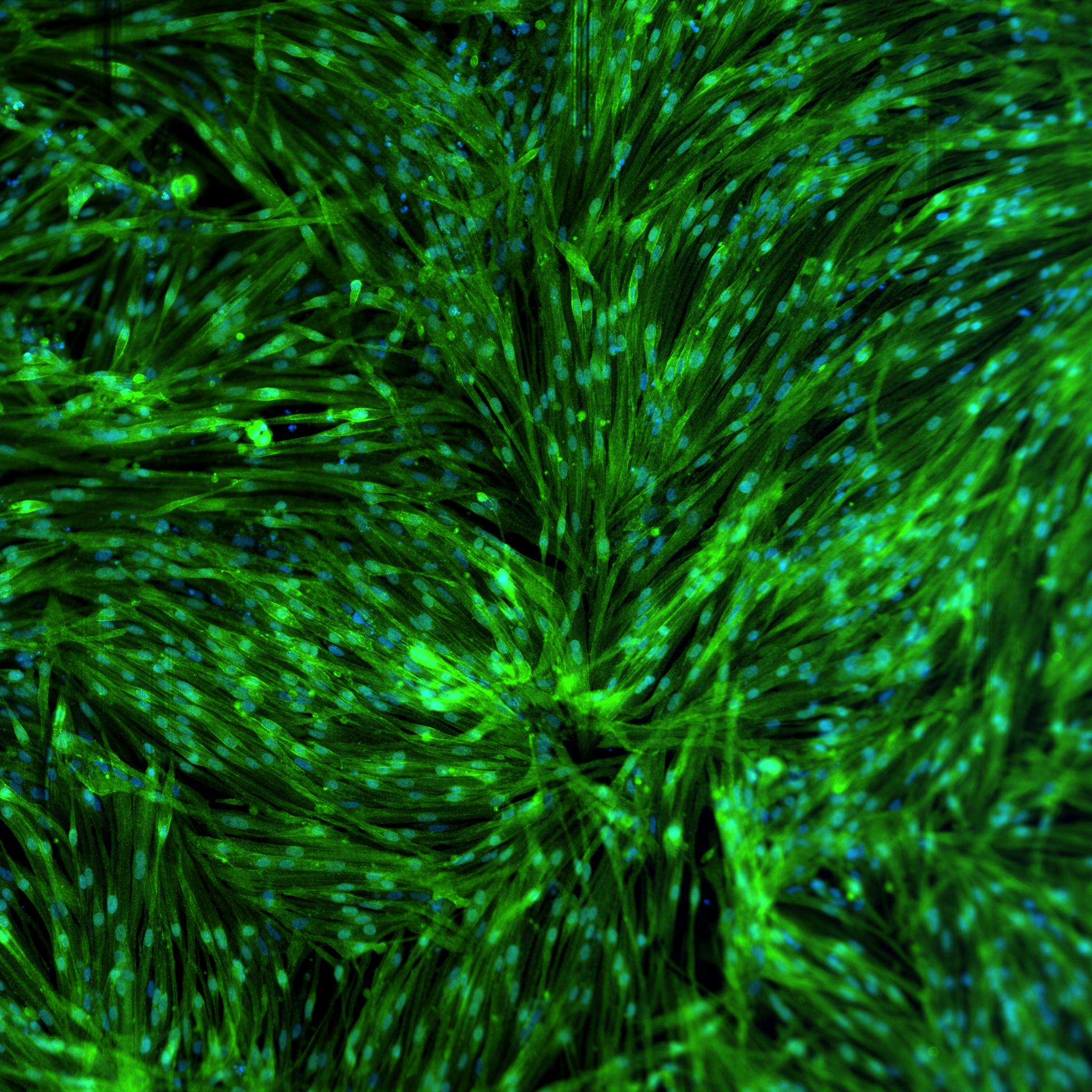 |
